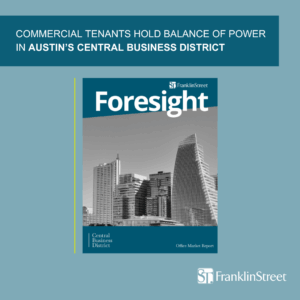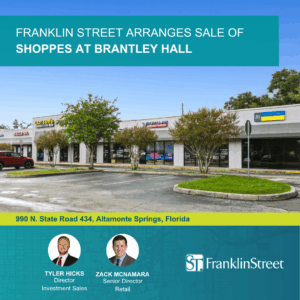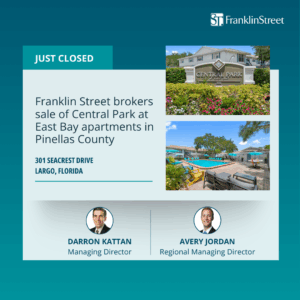Apartment buildings are a red-hot asset for small investors. But apartment buildings that house feuding gang members?
One property manager, Long Beach, Calif.-based Beach Front Properties LCC, is finding success in turning around such downtrodden dwellings.
Despite its upmarket name, many of Beach Front’s properties are located in some of Southern California’s toughest inner-city communities, including sections of Anaheim, Van Nuys and Long Beach. The company specializes in acquiring “class C” properties that are often rife with crime and graffiti, then turning the buildings into quieter and cleaner family housing.
A few weeks ago, Beach Front closed its 23rd micro fund since it was founded in 1997, Beach Front Vintage 2014 Fund, raising $11 million in a transaction that was 10% oversubscribed, according to the company. Beach Front buys and redevelops properties and also manages properties it doesn’t own. Overall, the company has about $1 billion under management.
Class C properties typically are home to working-class families while class B, the largest category, is home to the nation’s middle class. Class A buildings are mainly luxury properties.
Investor interest in small funds that invest in class C buildings has been growing in the past few years as operating income for the sector has improved. In many cases, returns on lower-income buildings are outstripping returns on higher-income properties.
“Occupancy rates are improving, rental rates are increasing and tenant retention is strong,” especially in markets with good job growth, said Jake Reid, a commercial real-estate broker with Franklin Street Real Estate Services in Atlanta. He said the operations are improving for class C due in large part to supply and demand: The supply of affordable housing has contracted in the past decade even as demand for the units has surged. The imbalance has allowed landlords to pass through hefty rent increases.
Kyle Kazan, Beach Front’s chief executive and co-founder, said the return on the company’s funds has averaged about 19% annually.
“If you buy a building in one class and try to move to the next class, like from C to B, you’re going to get an increased premium” on your return, said Paul Rajewski, a managing director at Pinnacle Investments in Los Angeles, which invested in Beach Front’s latest fund.
John Bishop, a wealth manager based in San Francisco who has invested in Beach Front funds for several years, says he has observed that funds’ annual returns typically start out at about 6% and then climb to about 14% within three to four years as the buildings in the fund are upgraded. He said the internal rate of return on the life of the investment is usually 19% to 21%. “It’s classic value investing,” said Mr. Bishop.
The strategy can be risky. Catering to a population that is financially fragile increases the possibility of lost rent collections and high turnover during times of economic weakness, said Mr. Reid. And managing such properties isn’t for the faint of heart.
“Some investors are initially worried about investing in [these neighborhoods], but they love seeing before and after photos,” said Mr. Kazan. “And they love seeing how cleaning up those properties has a big impact on the broader community.”
Mr. Kazan, a former police officer, says his law-enforcement training prepared him for the dangers of dealing with drug dealers and gang members who often inhabit the buildings when he first acquires them.
“I can read graffiti so I can see what’s going on and if there’s a turf war. If that were the case and we’re going to buy the building, I would sit down with the gang families and talk to them and show them the benefits of moving out instead of bringing in law enforcement. If there are gangs on site, there is drug dealing and you can’t get good rent. If you evict the drug dealers, you can improve the building and raise the rent.”
Sometimes Mr. Kazan has to pay “cash for keys” to get tenants to leave, he said. Other times, he has to negotiate peace agreements.
Several years ago, for example, he paid $1.2 million for a property in Anaheim that had been the scene of a recent police shooting. The dead victim was a young man whose friends and family set up a shrine to his memory on the property, which included photographs, candles and drug paraphernalia. Mr. Kazan worried that if he removed the shrine—the first step toward cleaning up the property—the gang members would retaliate.
To find a resolution, he said, he met with the victim’s mother and the two agreed that Mr. Kazan would replace the shrine with a permanent memorial plaque to be placed on the property.
“We removed all the photos and candles and beer bottles and bongs. Then we evicted people who were not paying rent,” said Mr. Kazan. The complex “is not fancy, but we made it clean and safe.”
New communities will be built in the outlying areas. Palmdale, Bakersfield, Riverside. People in the LA basin will be given free housing. Title to a home. Instant wealth.
The LA Basin will be bulldozed and dug up. A complete new master plan will be implemented that creates new large housing, townhouses, condos, roads, subways, monorails, bike paths, if you like Green your gonna love this. In the greatest weather zone on the planet. It’s a trillion dollar plan. It’s a 100 year vision.
I drive the ghetto all the time. Small over populated housing. 100 year old everything. You can never replace the water mains, the sewer system, never upgrade to Green whatever. You have to tear it down in large swaths. Rebuild a master plan. Create million dollar homes. High speed trains to outlanders.



